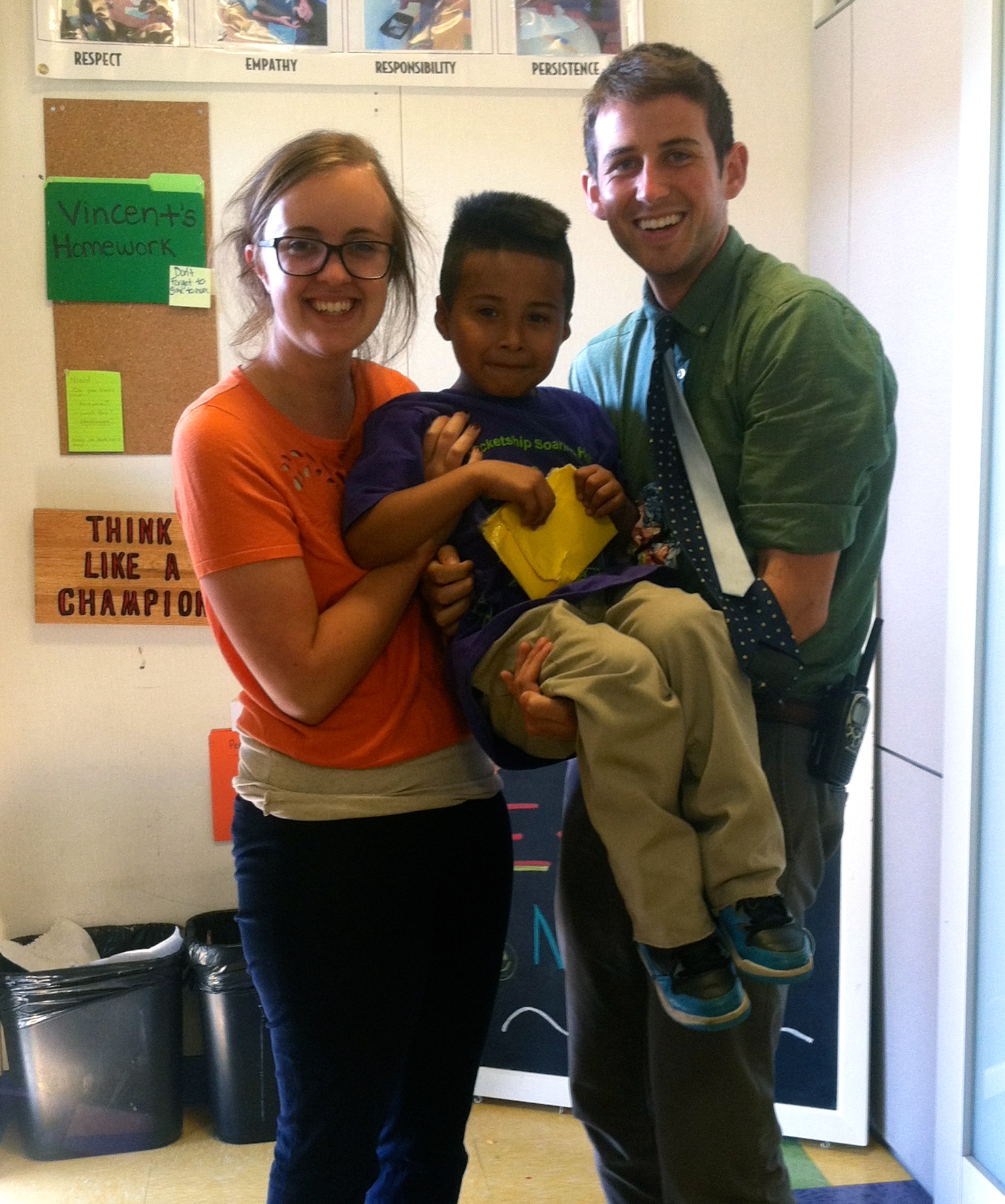
The Perks of Being a Co-Teacher
by Claire Hunt & Joseph Shook Third Grade Math Teacher & Integrated Special Education Teacher
After several years as teachers, we have realized that there is no such thing as a third grade classroom. Although our third grade students range from the ages of seven and nine when they arrive at the beginning of the school year, they have a wide range of academic levels ranging from kindergarten all the way to sixth grade. Despite differing levels, they all deserve an excellent education and are all capable of meeting ambitious academic goals. We couldn’t do this alone, but together, we can continually refine our co-teaching approach and maximize personalized instruction.
With this in mind, we have settled on a rotating station teaching model. While some students work independently or in small groups on differentiated material, we can both lead small groups in content — advanced, remedial, or grade level — at students’ exact level.
It’s been a process to get where we are today. Since the beginning of the year, we have learned three key lessons:
 1. Procedures (still) matter
1. Procedures (still) matter
When we first started planning our stations, we emphasized rigorous and differentiated content rather than procedures and format. The first day of running stations, our students were excited about the novelty of having a new schedule in the classroom and flashy dinosaur-themed group names. Because of their enthusiasm, stations ran more smoothly than we could have hoped. With only vague directions, students transitioned from group to group silently and were focused on their work like a bunch of little laser beams. We patted ourselves on our backs and went into our second day feeling good. Day Two was a whole different story; kids were flopping around the room like it was spawning season and they were a bunch of salmon being chased by grizzlies. We realized that we had not spent enough time setting expectations for students during stations and had to go back to basics.
2. Sync up content
Like any relationship, co-teaching is built on communication.Because one of us (Ms. Hunt) is a content expert and the other (Mr. Shook) is an intervention wizard, we’re able to leverage our strengths for the benefits of our students and learn from each other through collaboration. One afternoon while co-planning, I spent a good ten minutes telling Claire about the great collaborative activity I did with a group where we narrowed down the definition of an octagon together before she politely stopped me and let me know that although my efforts were admirable, I had defined an octagon incorrectly. “Joe,” she said, “You need to fix this.”
This ongoing communication keeps us on the same page. We’ve found that keeping a consistent meeting time and using a structured check-in format helps us make the best use of our time so that we can use the rest of our days to lead full, exciting and balanced lives! Jokes. Netflix and Ben & Jerry’s are where it’s at.
3. Be agile, be flexible
Co-teaching is so appealing because it has the potential to dramatically improve student outcomes for a wide range of learners. However, there is no one way to approach effective co-teaching; it’s going to vary for each teacher and classroom. We often reevaluate our co-teaching practice based on pertinent feedback and change direction drastically; other times, we have had to evaluate the feedback we receive and choose to implement some high leverage strategies without scrapping our entire practice. Ultimately, the success of co-teaching is dependent on the choices of the teachers implementing it. We can see the learning that is happening in our small groups every day, and each decision that we make must be grounded in what will provide our students with the highest quality instruction.
How do you approach co-teaching? Share your best practices with us → @RocketshipEd
Published on December 1, 2014
Read more stories about: Teacher Experience.


